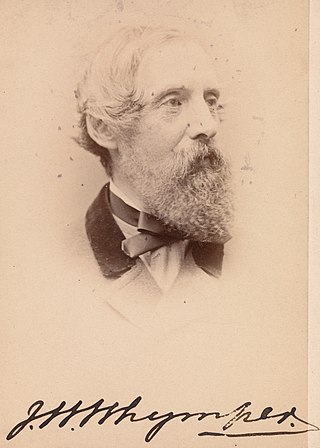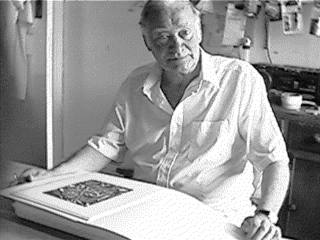Related Research Articles

Thomas Bewick was an English wood-engraver and natural history author. Early in his career he took on all kinds of work such as engraving cutlery, making the wood blocks for advertisements, and illustrating children's books. He gradually turned to illustrating, writing and publishing his own books, gaining an adult audience for the fine illustrations in A History of Quadrupeds.

Wood engraving is a printmaking technique, in which an artist works an image into a block of wood. Functionally a variety of woodcut, it uses relief printing, where the artist applies ink to the face of the block and prints using relatively low pressure. By contrast, ordinary engraving, like etching, uses a metal plate for the matrix, and is printed by the intaglio method, where the ink fills the valleys, the removed areas. As a result, the blocks for wood engravings deteriorate less quickly than the copper plates of engravings, and have a distinctive white-on-black character.
John Northcote Nash was a British painter of landscapes and still-lifes, and a wood engraver and illustrator, particularly of botanic works. He was the younger brother of the artist Paul Nash.
Gertrude Anna Bertha Hermes was a British wood-engraver and sculptor. Hermes was a member of the English Wood Engraving Society (1925–31) and exhibited with the Society of Wood Engravers, the Royal Academy and The London Group during the 1930s.

George Worsley Adamson was a book illustrator, writer, and cartoonist, who held American and British dual citizenship from 1931.

Richard James Lane was a prolific British engraver and lithographer. The National Portrait Gallery has some 850 lithographs of his portraits and figure studies, done between 1825 and 1850. The images include portraits of royalty, society notables and theatre personalities.

Edmund Evans was an English wood-engraver and colour printer during the Victorian era. He specialized in full-colour printing, a technique which, in part because of his work, became popular in the mid-19th century. He employed and collaborated with illustrators such as Walter Crane, Randolph Caldecott, Kate Greenaway and Richard Doyle to produce what are now considered to be classic children's books. Little is known about his life, although he wrote a short autobiography before his death in 1905 in which he described his life as a printer in Victorian London.
Monica Poole, was a British wood engraver.

John Farleigh CBE, also known as Frederick William Charles Farleigh, was an English wood-engraver, noted for his illustrations of George Bernard Shaw's work The Adventures of the Black Girl in Her Search for God, which caused controversy when released due to the religious, sexual and racial themes within the writing and John Farleigh's complementary wood engravings commissioned by Shaw for the book. He is also known for his illustrations of D. H. Lawrence's work, The Man Who Died, and for the posters he designed for London County Council Tramways and London Transport. He was also a painter, lithographer, author and art tutor.

Iain Macnab of Barachastlain was a Scottish wood-engraver and painter.

Josiah Wood Whymper was a British wood-engraver, book illustrator and watercolourist.
Noel Rooke (1881–1953) was a British wood-engraver and artist. His ideas and teaching made a major contribution to the revival of British wood-engraving in the twentieth century.
John Lawrence is an English illustrator and wood engraver.
Józef Sękalski (1904–1972), also known as Josef Sekalski and Juozapas Senkalskis, was a Polish painter, printer, etcher and illustrator who lived and worked in Scotland.

Ralph John Beedham (1879–1975) was a British wood-engraver. He occupies a unique position in the history of twentieth-century wood-engraving because, being a formschneider, he was probably the last person in Britain to serve an apprenticeship as a professional reproductive wood-engraver.
Gwenda Morgan was a British wood engraver. She lived in the town of Petworth in West Sussex.
Barbara Greg was a British artist who illustrated a number of books.
Joy Claire Allison Dalby is a British painter, engraver and book illustrator who mainly depicts botanical subjects through watercolour, gouache and wood.

Mary Viola Paterson was a British painter, wood engraver and colour woodcut artist.

James Bostock was a British painter. His work was part of the painting event in the art competition at the 1948 Summer Olympics.
References
- ↑ "George Mackley (1900 - 1983)".
- ↑ Biography- Brierhill Gallery , Boston US
- ↑ Albert Garrett, A History of British Wood Engraving (1978), p. 223.
- ↑ "No. 49212". The London Gazette (Supplement). 30 December 1982. p. 15.